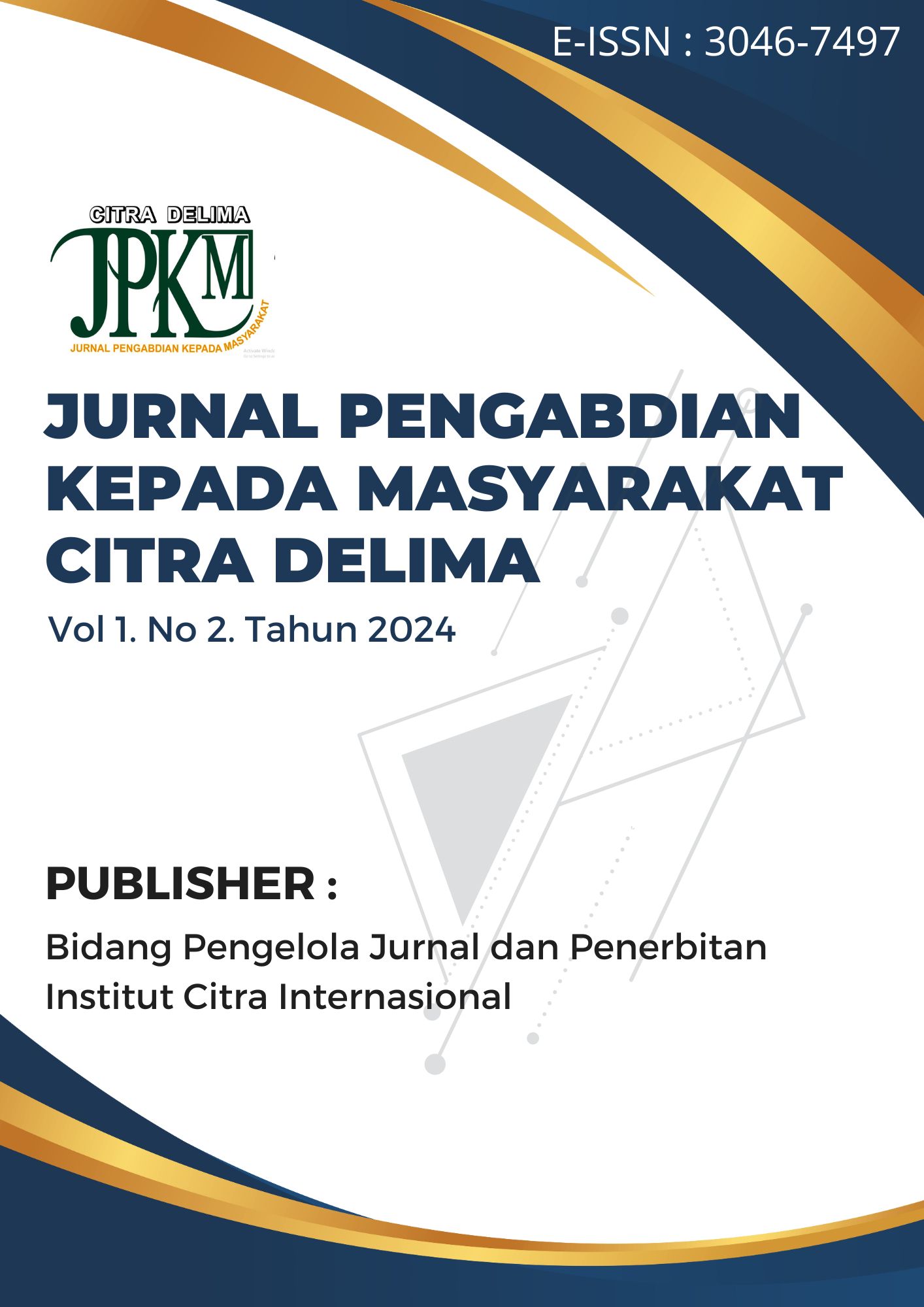Edukasi Toilet Training pada Ibu dengan Anak Usia Toddler
DOI:
https://doi.org/10.33862/jp.v1i2.424Keywords:
Education, Toilet Training, Mothers, Toddler Age ChildrenAbstract
Parents, especially mothers who have toddler-aged children, are not yet optimal in providing toilet training education to their children. Based on the results of discussions held with parents, they said that their children were still using pempers and had never been given education by the community health center about toilet training, so the parents had no knowledge about toilet training. Based on this, we took the initiative to hold health education regarding toilet training education as a promotive and preventive effort for teenagers to improve their health status. The purpose of this activity is to hope that toddler-aged children can independently carry out toilet training. The methods is carried out by lectures, discussions and questions and answers while the media uses video. The results of this activity show an increase in participants' knowledge about toilet training for toddler-aged children. The conclusion of this activity is that toilet training education for mothers with toddler-aged children through health education can increase knowledge about toilet training in mothers.
Downloads
References
Agustien, R., Umamah, N., & Sumarno. (2018). Pengembangan Media Pembelajaran Video Animasi Dua Dimensi Situs Pekauman di Bondowoso Dengan Model Addie Mata Pelajaran Sejarah Kelas X IPS. Jurnal Edukasi, 5(1). https://jurnal.unej.ac.id/index.php/JEUJ/article/view/8010
Ambon, P. A. B. K. (2023). Data Toilet Training 3 Tahun Terakhir.
Andriyani, S., Ibrahim, K., & Wulandari, S. (2014). Analisis Faktor-Faktor yang berhubungan Toilet Training pada Anak Prasekolah. Jurnal Keperawatan Padjajaran, 2(3). https://jkp.fkep.unpad.ac.id/index.php/jkp/article/view/84
Drysdale, B., Lee, C. Y. Q., & Dennis, W. (2015). Using Video Modeling Incorporating Animation to Teach Toileting to Two Children with Autism Spectrum Disorder. Journal of Developmental and Physical Disabilities, 27(149–165). https://link.springer.com/article/10.1007/s10882-014-9405-1
Hodges, S. J., Richards, K. A., Gorbachinsky, I., & Krane, L. S. (2014). The association of age of toilet training and dysfunctional voiding. Research and Reports in Urology. https://www.dovepress.com/getfile.php?fileID=21885
Ika, N., Prabandari, Y., & Lusmilasari, L. (2016). Influence of video modellingto the toileting skillat toddler. International Journal of Community Medicine and Public Health, 3(8). https://www.ijcmph.com/index.php/ijcmph/article/view/326/319
Jacob, H., Grodzinski, B., & Fertleman, C. (2016). Fifteen-Minute Consultation: Problems in the Healthy Child—Toilet Training. Arch Dis Child Educ Pract Ed., 101(3), 119–123. https://pubmed.ncbi.nlm.nih.gov/26933045/
Kartika, U., Mulidah, S., & S., K. G. (2016). Efektivitas Teknik Oral dan Modelling Terhadap Keberhasilan Toilet Training Pada Toddler. Jurnal Keperawatan Soedirman (The Soedirman Journal of Nursing), 11(1). https://media.neliti.com/media/publications/107216-ID-effektivitas-teknik-oral-dan-teknik-mode.pdf
Khaironi, M., & Ramdhani, S. (2017). Pendidikan Karakter Anak Usia Dini. Jurnal Golden Age Universitas Hamzanwadi, 1(2), 82–89. https://e-journal.hamzanwadi.ac.id/index.php/jga/article/view/739
Kimball, V. (2016). The Perils and Pitfalls of Potty Training. Slack Journals, 45(6). https://journals.healio.com/doi/abs/10.3928/00904481-20160512-01
Downloads
Published
Issue
Section
License
Copyright (c) 2024 Ummul Hairat, Fathimah Kelrey

This work is licensed under a Creative Commons Attribution-ShareAlike 4.0 International License.













